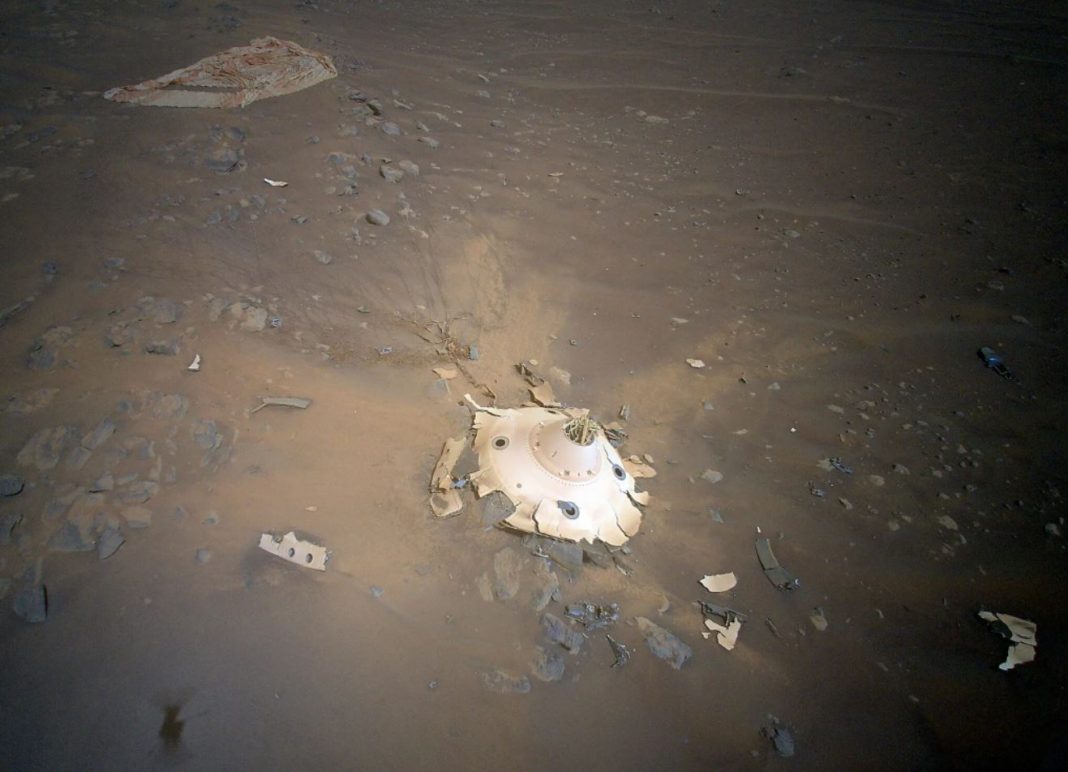Instead, the debris was created by NASA, and it is made up of a component known as a backshell that came loose during the landing of the Perseverance rover on the surface of Mars in February 2021, according to NASA.
Perseverance’s parachute system, which was developed by engineer Ian Clark, has a “clearly sci-fi quality to it,” according to Ian Clark, who was involved in the development of the system.
The Perseverance rover travelled near its landing site on its route to a river delta that previously flowed around the western rim of the crater, where it had spent a year investigating the rocks of the crater it had landed in. The rover’s little robotic partner, the helicopter Ingenuity, has remained at its side throughout the mission.
During its 26th trip, which took place last week, Ingenuity captured a total of 10 photographs during its 159 seconds in the air, reaching a distance of 1,181 feet. It is seen in these images that the backshell, or top half of the landing capsule, shielded Perseverance and Ingenuity as they crashed through the Martian atmosphere during their descent. The 70-foot-wide parachute that was deployed to halt the vehicles’ fall is still connected.
1.3 miles above the surface of the planet, the rover’s parachute and backshell were separated from the rover. Perseverance was transported to the surface by a rocket-powered mechanism known as Skycrane, while the backshell and parachute were dropped more than a mile distance to the northwest.
The backshell, which was over 15 feet in diameter, struck the ground at a speed of around 78 miles per hour, partly fracturing it. Aside from that, everything seems to be in fine condition, with no evident evidence of charring. Neither the parachute nor the suspension wires that link it to the backshell seem to have been harmed in the crash. Engineers, on the other hand, have just recently begun to thoroughly examine the new photographs.
Studying the remnants of the backshell might be beneficial for NASA’s next major Mars trip, which will include bringing back rocks and soil from Mars to Earth for more in-depth investigation. In order to accomplish this, the Mars Sample Return mission will require the deployment of two landers on the planet’s surface: one to collect rock samples being drilled by Perseverance and another small rocket to launch the samples into orbit for collection by another spacecraft and return to Earth.
Not only was Kenneth Farley, the mission’s project scientist, enthralled by the “really beautiful” photos of the hardware, but he was also thrilled by the surface of the moon on which the hardware had landed.
The two structures come together at a line of rocks that runs from the backshell to a location just beyond the parachute’s range of movement. “We’re interested in learning how these rocks could be connected to one another,” Dr. Farley stated.
The geology of Seitah and Maaz piqued the interest of the mission’s experts to the point that Ingenuity made a second pass above the dividing line between the two countries on Sunday. That collection of images will be returned to Earth on Thursday.
During its drives, Perseverance has also been quite active. On April 2, the spacecraft captured a sequence of images of the tiny Martian moon Phobos passing in front of the sun, causing a partial eclipse of the sun by the potato-shaped body. The precise measurements of Phobos’s orbit provide information on the internal structure of the planet Mars.

